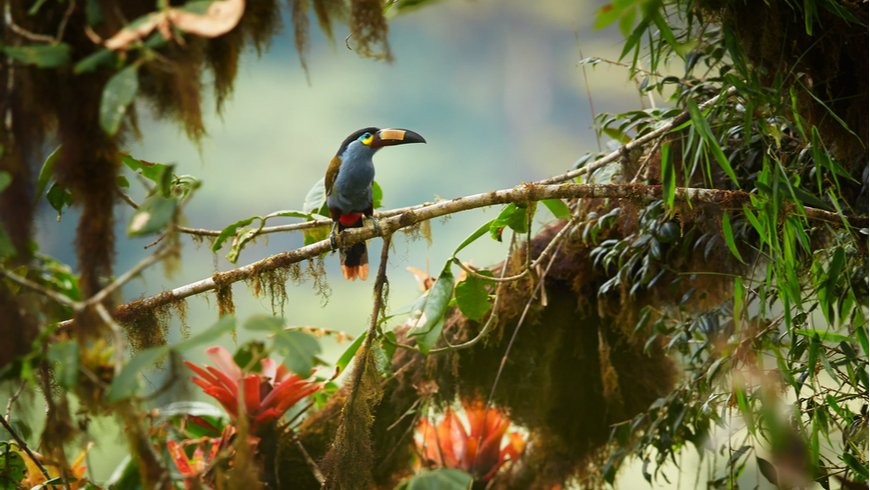|
Listen to article
Getting your Trinity Audio player ready...
|

BIODIVERSITY: Biodiversity is the variability, complexity and dynamicity of life on earth including animals, plants, and genes. Approximately 90% of the world’s biodiversity is concentrated within developing tropical and sub-tropical countries like India, Indonesia, Mexico, Brazil and Australia. India is a ‘Biological Diversity Hotspot’ and ranks in the top 10 plant-rich nations of the world and 7th among Asian countries. Our bioresources are potentially important for livelihood for our natives engaged in agriculture, medicines and fisheries etc. Natural resources provide the baseline for economic prosperity and development in the field of food, medicine, textiles, energy, recreation and tourism.
GENEPOOL CONSERVATION: ‘Gene Rush’ has replaced the old ‘Gold Rush’ in the rush for future profits as the bioresources are the basic raw materials for evolving biotechnologies and advancement in genomic technology, the study of genes of living organisms etc. The rush further leading to piracy has emerged as the fastest growing criminal industry in the world today. The quest for genetic resources has created an imminent danger to Indian biodiversity.
BIOPROSPECTING: It is the exploration (not exploitation) of biodiversity for commercially valuable genetic resources and biochemicals. It is described as searching for, collecting, and deriving genetic materials from biodiversity samples that can be used in commercialized pharmaceutical, agricultural, industrial or chemical processing end products. It relates to plants, animals and all living organisms also including the collection of traditional knowledge relating to the use of these resources from indigenous communities.
BIOPIRACY: It is defined as the misappropriation and commercialization of genetic resources and traditional knowledge of the indigenous people. Where indigenous knowledge of nature, originating with indigenous people, is used by others for profit, without permission from and with little or no compensation or recognition to the indigenous people themselves. When agro-food firms, pharmaceutical, cosmetic companies develop a commercially useful product and apply for a patent without acknowledging the information and contribution of the locals. It is an institutionalised emerging threat to biodiversity, food security and sustainable development of genetic natural resources, people and nations.
THREATS POSED BY BIOPIRACY: It is an infringement on the sovereign rights of nations, which decreases the economic health of indigenous communities engaged in agriculture, ecotourism, pharmaceuticals, cosmetics & fisheries. It depletes and destroys species. In the 20th century, India used to cultivate 30,000 varieties of rice and now only 10 varieties are grown in 75 % of the land being cultivated for rice.
BIODIVERSITY: A PROSPERITY SET SEEKING SECURITY NET: Securing biodiversity is key to food security, variety of foods and holistic health, the spread of many wildlife pathogens to humans. It is an indigenous cultural heritage, a pool of spiritual, aesthetic, recreational, religious values related to ecosystems and its components. Biopiracy makes these civilizational social relations vulnerable. Loss of biodiversity is irreversible, irreplaceable and it is high time to act to check biopiracy.
LEGAL REGIME PERTAINING TO BIODIVERSITY AND BIOPIRACY: International laws codify an obligation for conservation, sustainable use, sharing of information on and equitable sharing of benefits from biodiversity or utilization of genetic resources.
Convention on Biological Diversity (CBD, 1994): The first international treaty that not only recognizes the dependency of indigenous people on biodiversity but also their unique role in conserving life on earth. It obliges to respect, preserve and maintain the knowledge, innovations and practices of indigenous and local communities relevant for the conservation and sustainable use of biological resources.
Nagoya Protocol (2010): The Nagoya Protocol specifies the means by which the CBD can be applied. The protocol deals with Access and Benefit Sharing (ABS) of resources. The Nagoya Protocol ensures a regulation of access to genetic resources and for sharing the benefits arising from the utilization of genetic resources in a fair and equitable manner.
INDIA AND BIOPIRACY LAWS:
The Protection of Plant Varieties and Farmers Rights Act (2001): The act recognizes the role of farmers and indigenous communities as cultivators and conservers of agro-biodiversity of the country by rewarding them through benefit sharing and protecting their traditional farmer’s rights. The act has established a ‘National Gene Fund’ to promote the conservation and sustainable use of genetic resources of agro-biodiversity and a ‘Plant Varieties and Farmer’s Right Authority’ to perform all functions relating to the protection of plant varieties.
The Biological Diversity Act (2002): The Act was enacted to meet the obligations under CBD, to which India is a party. The act regulates the access to biological resources and associated indigenous knowledge to ensure equitable sharing of benefits arising out of their use.
In 2003, the National Biodiversity Authority (NBA), a statutory autonomous body was established to implement the provisions under the Act. NBA and State Biodiversity Boards (SBB) together manage traditional knowledge and access and benefit-sharing of genetic resources.
Geographical Indications of Goods- Registration & Protection Act (2003): Geographical Indications of Goods (GIG) Act, 2003 is an act with the aim to protect the geographical identifications of the natural goods of the country. Under this act, a product is defined by the geographical area where it is traditionally found.
The Traditional Knowledge Digital Library (TKDL): In 2001, TKDL was set up as a collaboration between the Council of Scientific and Industrial Research (CSIR) and the Department of AYUSH, Ministry of Health and family welfare to preserve the traditional knowledge from biopiracy. It is a digital library whose objective is to identify and register all traditional uses of India’s biological resources to combat biopiracy and unethical patents.
POPULAR CASES OF BIOPIRACY IN INDIA:
Patent on wound healing properties of Haldi (turmeric, Curcuma longa): In 1997, the US patent office revoked the patent on Haldi given to the University of Mississippi Medical Center, after ascertaining that there was no novelty; the findings by innovators having been known in India for centuries.
Patent on pesticide extracted from the Neem tree (Azadirachta indica): In 1994, a US Department of Agriculture granted a patent to a US-based company WR Grace, for a pesticide made from Neem extract. Subsequently, the European Patent Office agreed to withdraw the patent in May 2000 confirming that “nothing has been invented, and that knowledge and use of Neem have been widespread in India for many decades.
Patent on Basmati rice: In September 1997, a Texas-based company named, ‘RiceTec Inc.’, was granted a patent by the US Patent Office to call the aromatic rice grown outside India as ‘Basmati’. Finally, the US patent office revoked the patent on Basmati given to RiceTec Inc.
Patents on Karela, Jamun, Gumar and Brinjal for curbing diabetes: Karela (bitter gourd, Momordica charantia), Jamun (blackberry, Syzygium cumini), Gumar (Gymnema sylvestre) and Brinjal (Solanum melongena ) are commonly used in India for their anti-diabetic characteristics.
Smuggling and piracy of medicinal herbs from Nagaland: Northeast India is very rich in flora especially in the cultivation of medicinal plants by the indigenous tribes. Resource-rich Nagaland is plagued by bio-piracy with rare medicinal herbs, orchids and other endangered species being smuggled out of the state. These plants are exploited without benefit sharing with natives by pharmaceutical companies for commercial benefits. Ginseng, Paris cordifolia, Taxus baccata and Cephallu taxus have medicinal properties and are often smuggled to Myanmar.
POLICY SUGGESTIONS: adopting bioprospecting in an ethical and sustainable manner which may involve strengthening:
- Dialogue with the indigenous community
- New deposit rules for gene banks and patent
- Tribunals to resolve disputes
- State funds for the indigenous community
- Strengthening Traditional Knowledge Digital Library (TKDL)
- Critically analyze, review and amend legislations related to biopiracy to provide adequate protection to genetic resources.
- Integration of Environmental Protection Concepts (EPCs) into legislations and national development projects
- Raising public awareness relating to biopiracy and its impacts
- Establishing state-funded research and study groups on biopiracy and encouraging local scientists to engage in genetic research.
CONCLUSION: Rethinking how to fill the blind spot in Indian agriculture and sustainable development involves the conservation of biodiversity and traditional knowledge. Biopiracy is an emerging as a sophisticated kind of institutionalised crime, maybe an outgrowth of neoliberalism. There are no sufficient laws for punishing the biopirates. We need strong legislation and compliance relating to IPR to protect traditional knowledge & genetic resources. Tropical, subtropical, developing countries need to unite and be more vocal in the international arena for their rights. It is high time to integrate ‘Environmental Protection Concepts’ into legislations & development projects. Institutions, study groups and working groups should encourage local scientists to raise public awareness and conserve and promote indigenous resources and knowledge systems. Summarily, we need to pace up in implementing strategies to conserve and promote sustainable use of biological resources and ingrain these basic ethos as ‘a way of life’. The Indian idea of sustainable-socio-economic development is about coexisting, coevolving with and living close to nature i.e. to preserve, protect and promote natural, traditional resources and knowledge systems.






Add comment